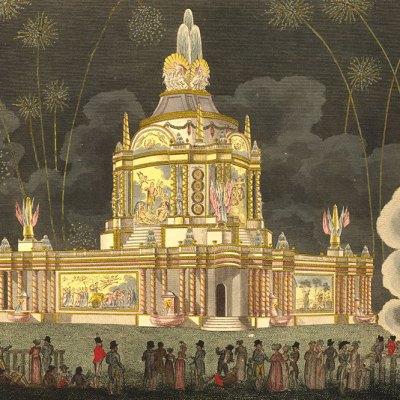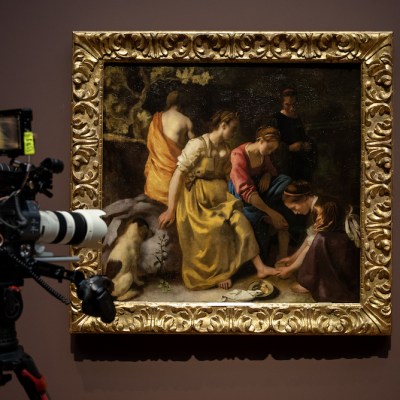 ‘Four things to see this week’ is sponsored by Bloomberg Connects, the free arts and culture app. Bloomberg Connects lets you access museums, galleries and cultural spaces around the world on demand. Download the app here to access digital guides and explore a variety of content.
‘Four things to see this week’ is sponsored by Bloomberg Connects, the free arts and culture app. Bloomberg Connects lets you access museums, galleries and cultural spaces around the world on demand. Download the app here to access digital guides and explore a variety of content.
Each week we bring you four of the most interesting objects from the world’s museums, galleries and art institutions, hand-picked to mark significant moments in the calendar.
It is no exaggeration to say that Thomas Edison’s light bulb changed the world – the invention marked the end for candles, whale-oil lamps and gaslights for households across the globe.
Many had attempted to illuminate interiors by way of incandescent light before – in the 1800s, the English scientist Humphry Davy made a powerful electric lamp – but the American inventor’s version, patented on 21 October 1879, was cheaper, longer lasting and more energy efficient. Edison’s bulb was the result of over 1,200 experiments and could last a record-breaking 14.5 hours. ‘My light is at last a perfect one,’ he bragged to a New York Times reporter. In the same year, over 3,000 people visited Edison’s lab on New Year’s Eve to witness the inventor switching a display of 40 light bulbs on and off, like an electrified fireworks display.
Now, 144 years after Edison’s historic invention, we take a look at four works of art and objects that tell the history of light.
Job mocked by his wife (c. 1630), Georges de La Tour. Musée départemental d’art ancien et contemporain, Epinal
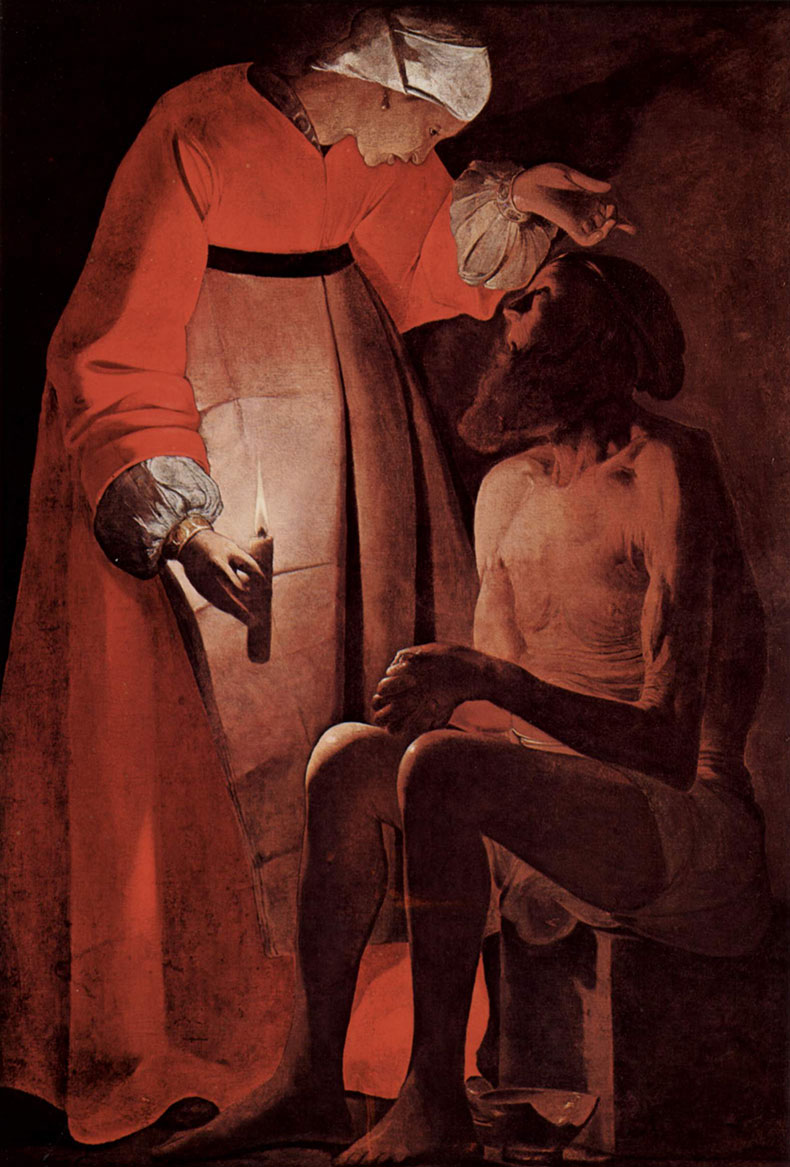
1. Job mocked by his wife (c. 1630), Georges de La Tour
Musée départemental d’art ancien et contemporain, Epinal
Like Caravaggio and Turner, the French baroque painter Georges de La Tour was a master of light. In his intimate scenes, figures are drawn together by the glow of a candle, which in this work is thought to symbolise the presence of God. The painting depicts a scene from the Old Testament in which Job, a once rich and influential man, is being taunted by his wife for maintaining his faith despite their now dire circumstances. Click here to find out more.
Whale-oil lamp (c. 1813–30). The Corning Museum of Glass, New York
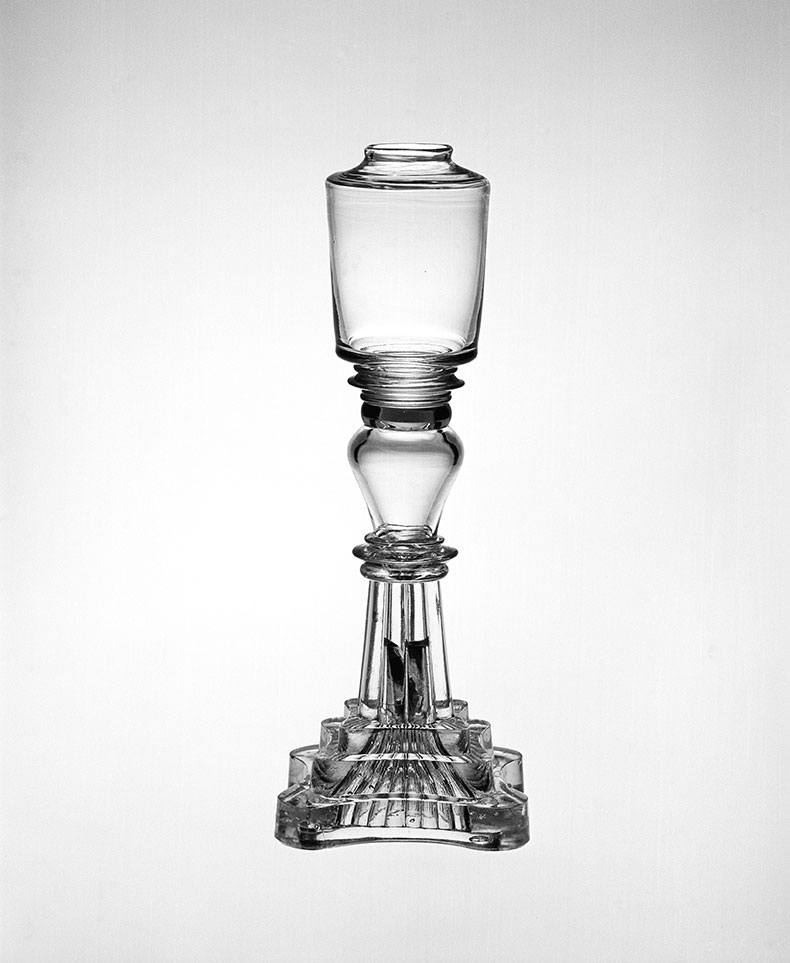
2. Whale-oil lamp (c. 1813–30)
The Corning Museum of Glass, New York
Despite the expense – and stink – burning whale oil was a popular way to bring light into one’s home in the early 19th century. This elegant example of an oil lamp, made from colourless glass, is architectural in style, with a stepped base and fluting on the inside of its central stem or column. Click here to find out more.
Tiffany lamp (1890–1900). Museum of Applied Arts, Budapest. Photo: Gellért Áment
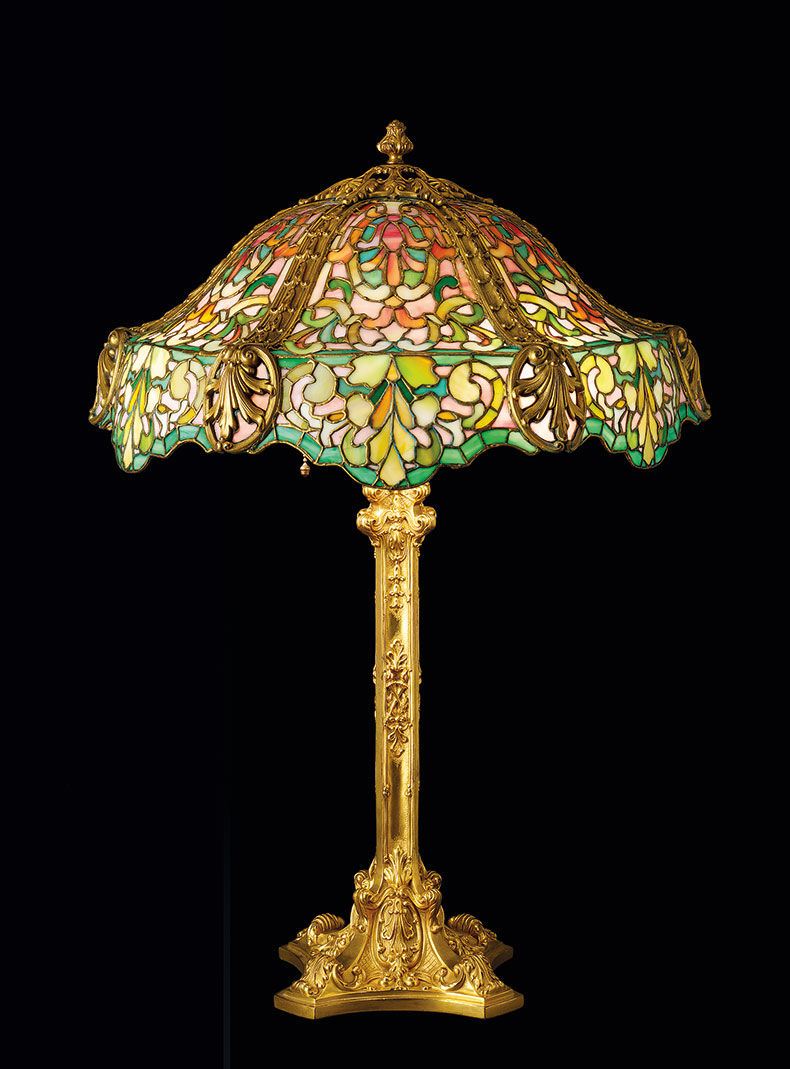
3. Tiffany lamp (1890–1900)
Museum of Applied Arts, Budapest
Alongside the Anglepoise lamp and Isamu Noguchi’s Akari lights, the Tiffany lamp is one of the most iconic pieces of lighting design to develop from Edison’s invention. In this example, a Tiffany glass lampshade – typically art nouveau in style, with a polychrome nature-inspired motif – has been paired on a gilded bronze stand. Click here to find out more.
The SM100 Solar Light, Henry James. Design Museum, London. Photo: SolarAid, Future Product and Yingli Namene

4. The SM100 Solar light, Henry James
Design Museum, London
While it might seem like the whole planet has been illuminated by Edison’s invention, there are still many places where electrical infrastructure is lacking. Designer Henry James created these affordable and hardwearing solar lights for people living in rural areas of countries such as Malawi and Zambia, intended to replace dangerous kerosene lamps that exude toxic fumes into homes. Click here to find out more on the Bloomberg Connects app.
Download now
![]() ‘Four things to see this week’ is sponsored by Bloomberg Connects, the free arts and culture app. Bloomberg Connects lets you access museums, galleries and cultural spaces around the world on demand. Download the app here to access digital guides and explore a variety of content or scan the QR code.
‘Four things to see this week’ is sponsored by Bloomberg Connects, the free arts and culture app. Bloomberg Connects lets you access museums, galleries and cultural spaces around the world on demand. Download the app here to access digital guides and explore a variety of content or scan the QR code.

